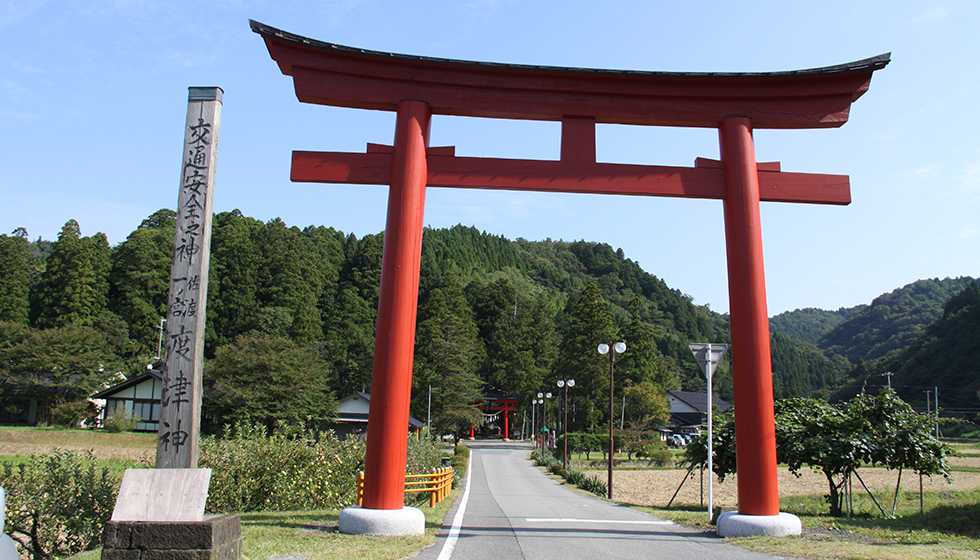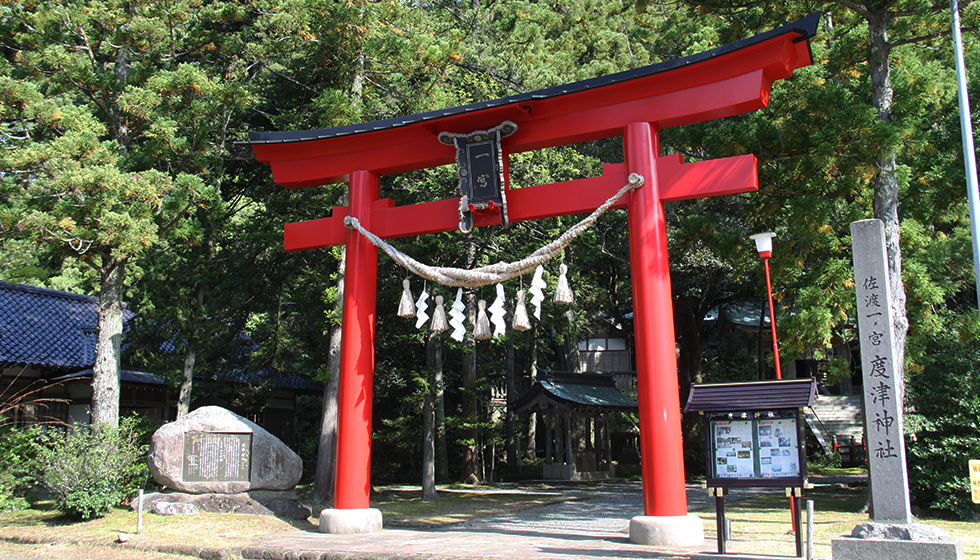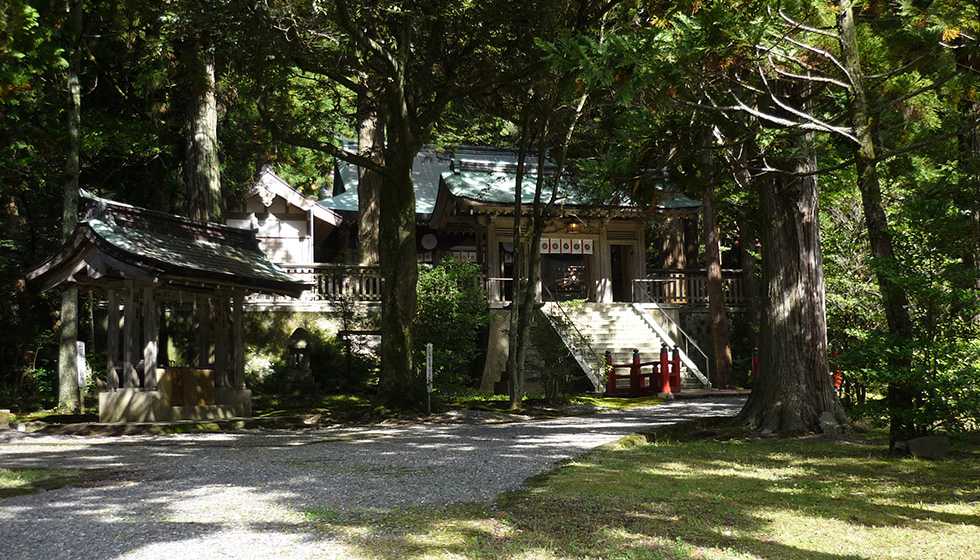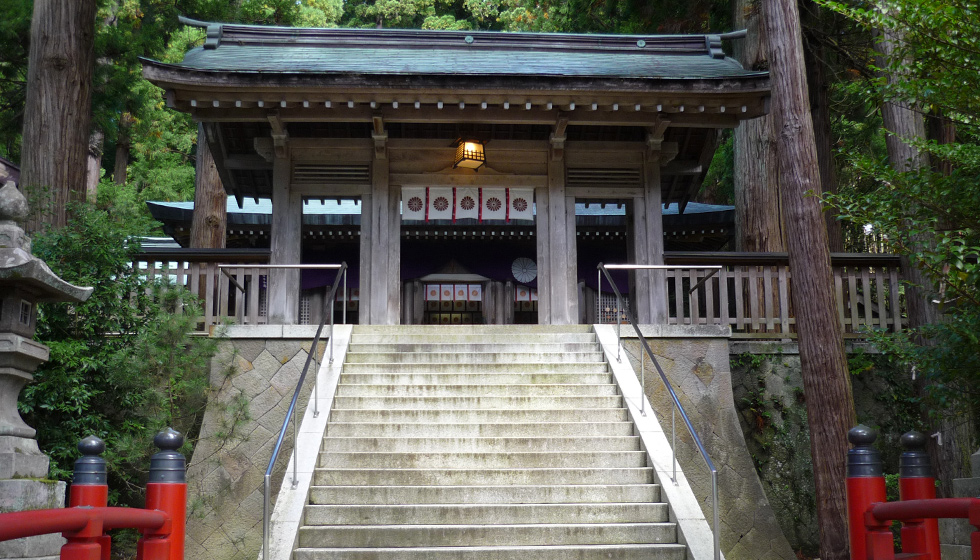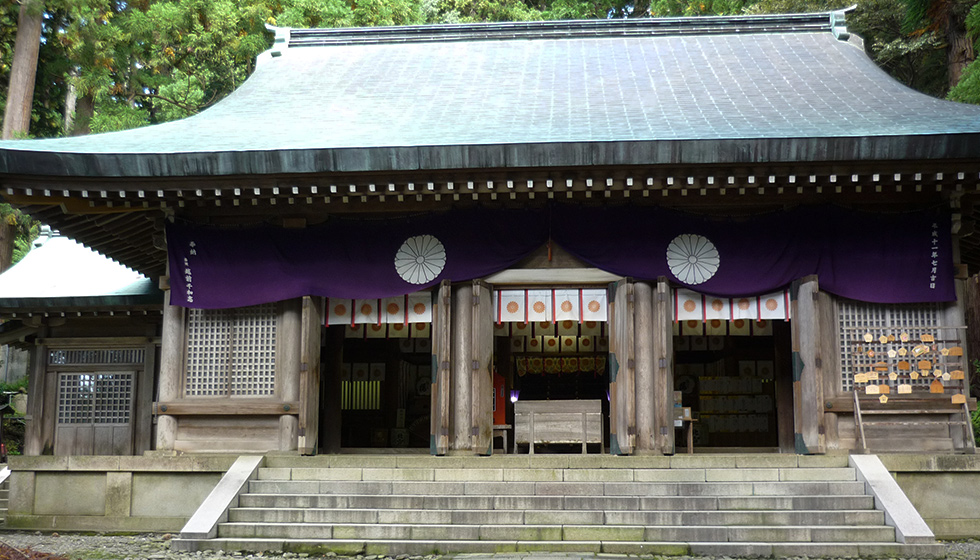- Watatsu Shrine
Watatsu Shrine
Facility Basic Information
- Address
- 550-4 Hamochi Iioka, Sado, Niigata 952-0503
- For inquiries
- 0259-88-2030
- Transport Access
- Ogi Port Approx 15 minutes by car
- Nearest bus stop
- Ichinomiyamae (Watatsu Line) Approx. 1 minute on foot from bus stop
- Parking
- 20
Nearby Spots
-
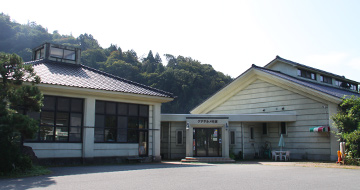 Hot Spring Use of bathing facilities only
Hot Spring Use of bathing facilities onlyKurtherme Sado
Kur means convalescence, treatment and recuperation, and therme refers to the thermal baths in German. As the name suggests, the Kurtherme Sado incorporates German systems as well. You can enjoy various hot spring baths, such as an air bubble bath, a jacuzzi, and neyu (a shallow bath tub to lie down). The bathrooms with high ceilings surrounded by large glass window is amazingly open and spacious. Please fully enjoy the natural hot spring spa fed by a continuous flow of hot spa waters direct from the source in a lush, green environment.
-
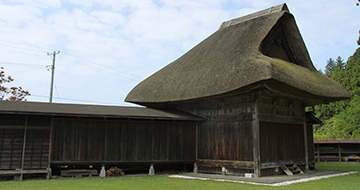 Shrines and Buddhist Temples Noh Stages
Shrines and Buddhist Temples Noh StagesKusakari Shrine
Impressive stone light towers stand along the front path leading to the worship hall. Kusakari Shrine was called "Hachioji Gozutenno" around the middle of the Edo Period (early 19th century), and worshipped as a god of agriculture. It was later called Gion Hamochi Shrine for a time, and then renamed after the old name of the village "Kusakari no Sato," in 1870. Kusakari Shrine is known for offerings of bonfire Noh performances, and a kind of kagura (dance and music dedicated to gods) called "Onimai Tsuburosashi," (designated a Niigata Prefecture Intangible Folk Cultural Asset) performed at Hamochi Festival held annually on the 15th of June. The Noh stage (also one of Niigata Prefecture's Designated Tangible Folk Cultural Assets), which is considered to have been built before the Meiji Period, has a hip-and-gable thatched roof in front and a hipped roof at the back. The structure blends well with the idyllic landscape, whilst projecting a stately ambience.
-
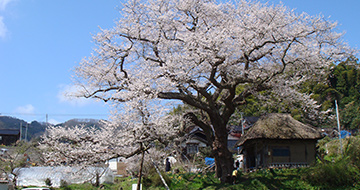 Plants
PlantsCherry Tree of Hojobo
The cherry tree of Hojobo sits in Hamochi Osaki, a place known for the Osaki Soba (buckwheat noodles) Festival. Branches stretch out as if they are cuddling up to the thatched roof house on the site where Hojobo Temple used to be. The tree is said to be 250–260 years old, measuring 21 meters tall and 6.9 meters in circumference at its base. The crown stretches 26 meters both east-to-west and north-to-south. The tree marks the timeline of farmwork, and locals affectionately call it "Hojobo's sowing cherry."
-
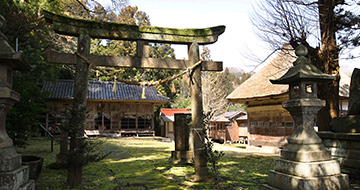 Shrines and Buddhist Temples Noh Stages
Shrines and Buddhist Temples Noh StagesOsaki Hakusan Shrine Noh Stage
The Osaki community is located up the Hamochi River, which runs through the mountains. Here, the tutelary Hakusan Shrine stands side by side with Miyamotodera Temple. The neatly-built stone walls are beautiful, and after passing through the torii gate, the worship hall encased in the protective forest comes into view. This serene place symbolizes the Osaki area, where sophisticated nonmaterial culture is being nurtured. Inhabitants in Osaki hand down various performing arts such as Chobokuri (the phallus dance) and Bunya puppet theatre, and are thought to be particularly enthusiastic about Noh performances compared to others in Sado. Comprised of a main stage area and a rear stage area, the Noh stage within the compound has a thatched hipped roof and a main entrance on the gabled side. The wall at the back has the traditional painting of a pine tree, and there is a space to hang the big temple bell that appears in "Dojoji," one of the great Noh plays. In recognition of its role in handing down Noh culture, as well as the value of its architecture, this stage has been designated a City Cultural Property.
Stores where you can eat and drink nearby
-
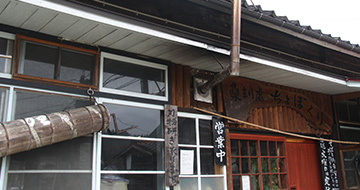 Casual Eatery Soba (buckwheat) and Udon Noodles
Casual Eatery Soba (buckwheat) and Udon NoodlesChobokuri
In Hamochi, "Osaki Soba no Kai" takes place several times a year, where you can enjoy local specialty dishes and hand-kneaded soba (buckwheat noodles), as well as traditional performing arts, attracting many fans throughout Japan. Chobokuri was opened in 2007 by the organising group of Osaki Soba no Kai. Here you can have a simple, but delightful treat of soba noodles made from 100% stone-ground buckwheat all year round. Seeking soba noodles soaked in flying fish based broth, soba lovers visit Chobokuri both from within and beyond Sado. The interior of a quaint Japanese-style house is also a highlight of Chobokuri. The restaurant's name derives from a traditional performing art in the Osaki area, which is performed at Osaki Soba no Kai.
-
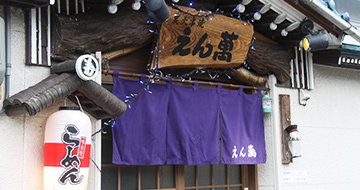 Casual Eatery Izakaya (Japanese-style pub) Grilled Skewers/Yakitori/Chargrill Chinese Ramen Noodles
Casual Eatery Izakaya (Japanese-style pub) Grilled Skewers/Yakitori/Chargrill Chinese Ramen NoodlesChargrilled Skewers Enman
The Enman restaurant specialises in chargrilled skewers, expressing their passion and determination towards handmade dishes. Using the brand-name chicken "Koshi no Tori" sourced from Niigata, the chef threads the chicken onto skewers one by one. Grilled at a high temperature over charcoal, the skewers are flavourful and taste excellent even when cold, making them a popular takeaway meal. Their Chinese ramen noodles are served with housemade chicken bone broth. Enman also serves à la carte dishes and chef's choice menus.
-
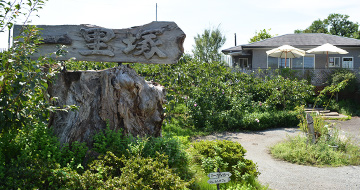 Tea House/Coffee Shop Italian Cuisine Japanese-style Curry with Rice Sweets
Tea House/Coffee Shop Italian Cuisine Japanese-style Curry with Rice SweetsPoteau Indicateur
Surrounded by persimmon trees, the farmhouse café "Pouteau Indicateur" stands in the Hamochi Murayama area. You can use the ichirizuka to find the cafe, an old Japanese version of a milestone, the only one still in existence on the Aikawa and Ogi road. The menu items are all hand-made, using home-grown vegetables and fruits. The top reccommendations are pasta and curry with rice. Beef curry is made from the famous Sado Beef. All dishes are served with a fresh salad. Desserts which fully express the taste of the season are also popular. The name "Pouteau Indicateur" means signpost/milestone in French.
